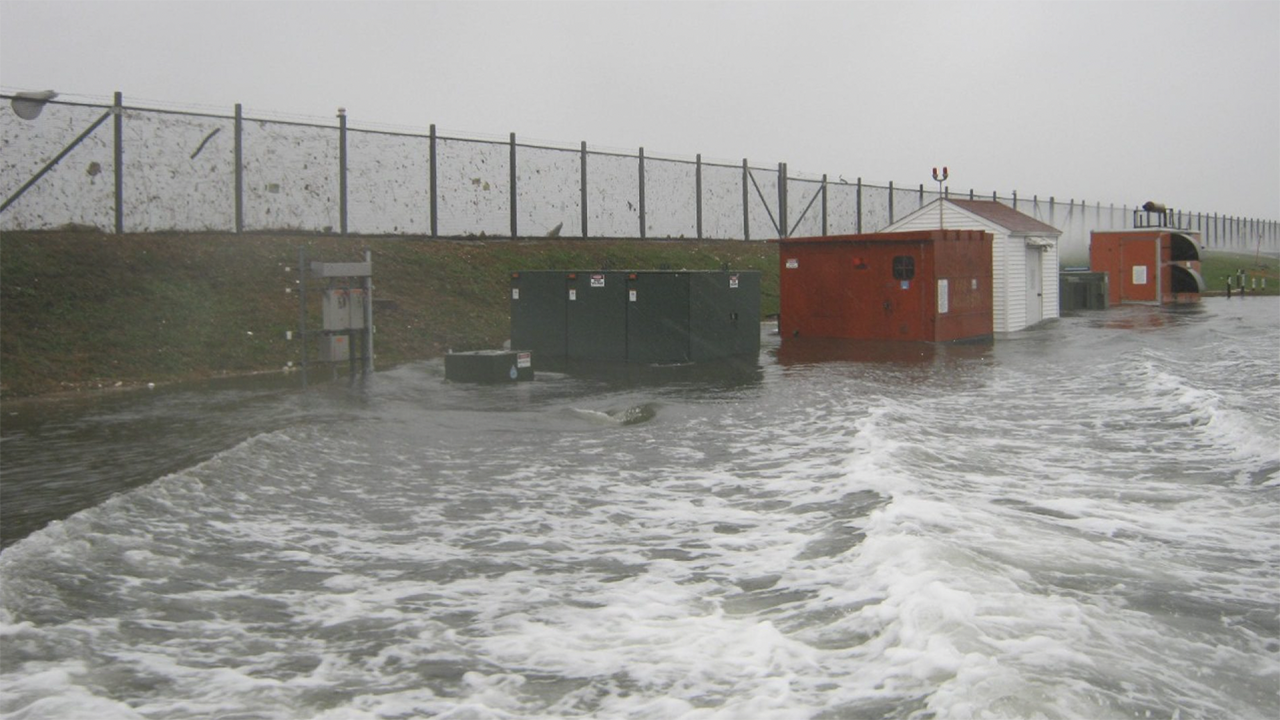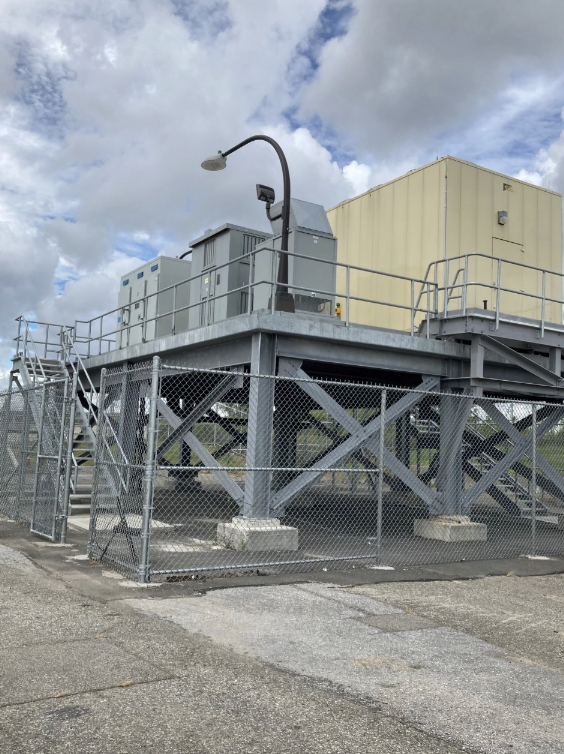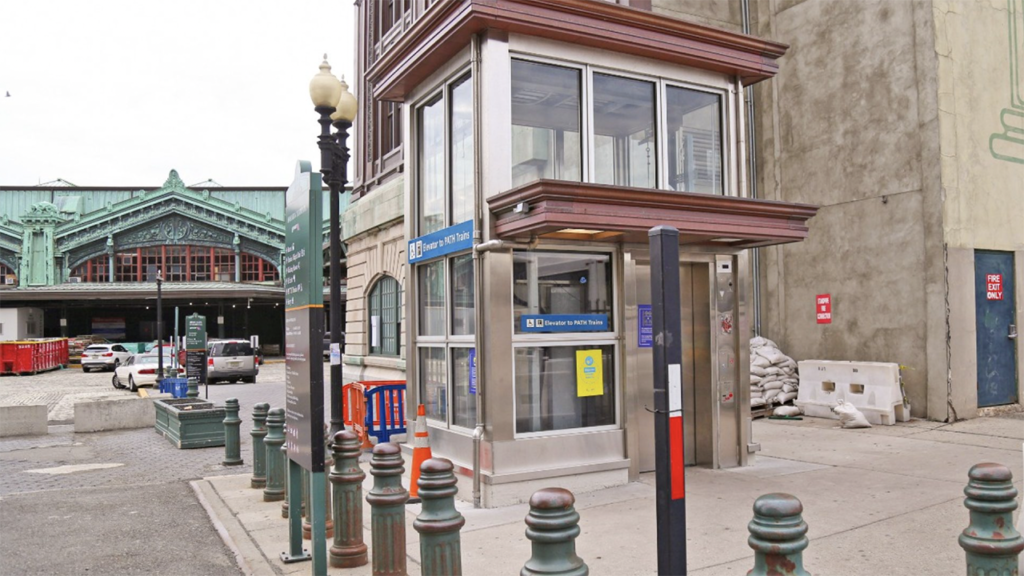
PANY/NJ: Prep for Hurricane Season Is Year-Round Effort
Written by Stella Pagkas, Media Relations, Port Authority of New York and New Jersey
Flooding at LaGuardia Airport after Hurricane Sandy. (Caption and Photograph Courtesy of PANY/NJ)
In 2012, Superstorm Sandy pummeled the region, causing an estimated $2.5 billion in damage to Port Authority of New York and New Jersey facilities. Hundreds of millions of gallons of water flooded much of the PATH system, as well as crucial sites and equipment at the World Trade Center campus and LaGuardia, John F. Kennedy International and Newark Liberty International airports. It was “a wake-up call for the entire region and for the Port Authority,” Port Authority Chairman Kevin O’Toole said on the 10th anniversary of the storm.
Since Sandy, the agency has developed a new framework for climate change resilience. Innovative measures at each site now ensure travelers can reach their destinations safely, even as climate change prolongs the storm season and intensifies hurricanes, thanks to a new framework implemented by the agency to address the worsening storms that climate scientists predict will affect the region more frequently. According to a study published by the National Academy of Sciences, North Atlantic hurricanes are 260% more likely to reach category 3, 4 or 5 than they were 40 years ago.
In 2015, the agency instituted new climate resilience guidelines, through which an employee team of climate resilience specialists assesses a facility’s vulnerability to flooding and works with design teams to integrate resilience into Port Authority projects by looking at climate change projections.
“The guidelines are intended to ensure that the new and substantial rehabilitations that we execute are designed for flood resilience, not just today, but over the long term,” said Josh DeFlorio, the Port Authority’s Chief of Resilience and Sustainability. “If you have more resilient buildings and infrastructure, by and large, you’re going to be in much better shape.”
The guidelines take into account the unique needs of each Port Authority facility. Across the agency’s airports, “dry floodproofing” measures have been implemented, including flood walls, doors and deployable shields. At LaGuardia Airport, for example, electrical substations, pumps and newly constructed terminals have all been elevated to reduce the risk of hurricane flooding, even as sea levels rise.

At PATH facilities, flood walls and barriers have been installed in locations that were inundated with water in the aftermath of Sandy. At the PATH Hoboken station, a resiliency project included the installation of a new steel frame elevator with flood-rated glass and flood doors at stairway entrances. At the PATH Exchange Place, Grove Street, and Newport stations, exterior flood walls and internal, aquarium glass walls, and flexible fabric barriers have been installed to protect against the coastal flooding that had caused severe damage during Sandy. At the Harrison station, the entrance plaza and fare equipment were elevated in anticipation of rising sea levels.
The climate resilience guidelines were also applied to design the flex gate waterproof barrier technology that is being installed at the Holland Tunnel. The barriers, which are retractable covers made from waterproof fabric, are intended to prevent the intense flooding and salt damage that occurred at the tunnel in the aftermath of Sandy. Like the rest of the requirements included in the guidelines, these repairs and improvements are intended to prepare facilities to handle stronger and longer storm seasons in the future.
And while the U.S. Department of Commerce’s Atlantic Oceanographic and Meteorological Laboratory defines the Atlantic hurricane season as June 1 to Nov. 30, the Port Authority’s hurricane preparedness efforts take place year-round, even if the worst of hurricane season arrives in late summer or early fall. These year-round resiliency projects and maintenance work ensure staff across the agency’s wide-ranging infrastructure and facilities are always sharing information and lessons learned from storm to storm: “One thing about the maintenance and operations people out at the facilities is that they handle weather very well,” said Ira Forman, a Senior Manager of Emergency Operations at the Port Authority.

As storms develop and travel up the East Coast from the Caribbean, the agency’s Office of Emergency Management tracks their development, projecting their eventual impact on the New York/New Jersey region and communicating this trajectory to each Port Authority facility. Staff at each facility use this information to stay on top of rapidly changing conditions.
“We gather the information and get it out to the agency so everybody knows what we could be dealing with,” Forman said. “It’s lots of situational awareness, and lots of contact with our partners at the National Weather Service and the National Hurricane Center.”
Ongoing storm resiliency projects, such as the installation of flood mitigation through flex gates at the Holland Tunnel, go hand-in-hand with mitigation efforts such as the agency’s Office of Emergency Management’s live storm tracking, so that facilities are prepared for storms both in the short term and decades to come. As the region plans for the impacts of climate change, the Port Authority’s resilience efforts will contribute to what DeFlorio hopes is a larger collective effort at disaster mitigation and sustainability.
“We strive to be a leader in this space, but at the same time we need to learn as a community,” DeFlorio said.
“Climate change is a global existential threat and there’s no one agency or governmental body or private actor that can do it alone. It’s got to be a team effort.”
—Josh DeFlorio, Port Authority’s Chief of Resilience and Sustainability
The article first appeared on the “Now Arriving” blog section of the PANY/NJ website.
Further Reading:
• Hurricane Sandy, Ten Years Later
• More Railway Age articles on Hurricane Sandy



